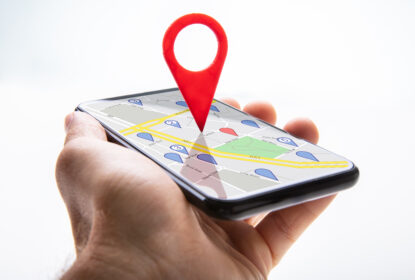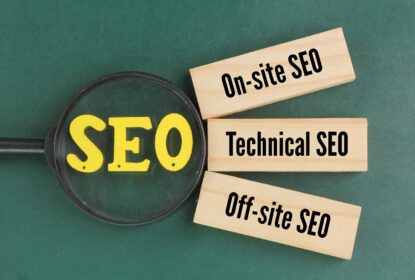As a business owner in a digital age, establishing a local SEO presence is vital for the success of your local business. Everyone has a smartphone in hand and uses maps and local listings regularly to find the services they need. Not only will a local SEO strategy help to bring in more foot traffic, but you can also get more visitors to your website, a better reputation online, and even higher conversion rates from the leads you are receiving.
Local SEO is key for small businesses. When potential customers are looking for providers in a specific geographical location, these local results are often the first place they look. Your business listing can be set up with geo-targeting to ensure your website is coming up when people search for related local keywords.
How strong is your local SEO? If you don’t have a presence in Google business or are dissatisfied with your position in the local SEO rankings, then it’s time to implement a new plan to improve visibility and connect with your target audience. Follow these top 10 local SEO strategies to improve your results:
Tip #1: Set Up & Optimize Your GMB Listing
Google My Business (GMB) is the foundation of a successful local SEO campaign. No matter the products or services you offer, ensuring your local business page is active and updated is essential. Ensure that everything is accurate, including the name, address, and phone (NAPs), as well as house of operations, current specials, and more. Upload high-quality images to make your page more visually appealing and show examples of your offerings.
Tip #2: Ask for Reviews
Encourage your customers to leave reviews on your Google local business page. The more reviews you have, the better changes your GMB page will show up high in the search results. Also, be proactive about responding to both positive and negative reviews to show that your business is engaged in customer service. Then, you can leverage these reviews by sharing positive reviews on your website and social media.
Tip #3: Consistent and Accurate Contact Info
There are times when the address, business hours, and other relevant information change. Mark your calendar to check your GMB listing, social media platforms, and website to ensure that all information is accurate and updated. If there are small inconsistencies in this information, it could negatively impact your online presence and local SEO.
Tip #4: On-Page Optimization
Make sure that you have quality content on your website, then add local keywords naturally into the content. Don’t stuff the keywords… instead, ensure the content is natural and supports user experience. On-page optimization factors should align with the target local keyword, including placing the keyword in the meta-title, meta-description, alt-tags, image name, URL, and context.
Tip #5: Optimize for All Devices
Having a mobile-friendly website is necessary. Many people are using smartphones and tablets to find local businesses. If they come across your GMB listing or website in the search results, you need to ensure that website information is easy to view and navigate.
Tip #6: Think About All Search Methods
Also, think about how keywords change because more people are using voice search instead of typing. If you want to optimize your website and local SEO page for relevant keywords, then make sure you pick conversational keywords. For example, if someone is typing, then they might type in “LA nail salon.” But if they are voice searching, they might say, “Where’s the best nail salon in LA?”
Tip #7: Follow a Schedule for Content Publishing
Don’t underestimate the power of consistent, quality content. Regular publishing gives you more opportunities to rank your website in the search results for long-tail and local keywords. Publish this content on your website, updated photos on your GMB listing, and regular posts on your social media profiles. The goal is to cast a wide net to bring in more potential leads and customers.
Tip #8: Implement a Backlinking Strategy
When other websites are linking to your website, it’s like having “votes” that help to boost your SEO results. Building backlinks can be a game-changing move to bump your website higher in the search engines. Look for ways to collaborate with local businesses to get links to your website. Or, you can hire a marketing agency to help with your local SEO strategy and make sure they use backlinking as part of their plan.
Tip #9: Optimize Page Load Time
If your website is slow, it is highly likely that someone will land on the site and leave quickly because they are bored waiting for the page to load. Loading time affects bounce rate, which has an impact on local SEO results. Consider things that can speed up page load times, such as maintaining smaller image file sizes and adjusting other technical details on the website as needed.
Tip #10: Track Data and Update As Needed
Not only do you need to set up the initial SEO plan, but it’s also essential to track the results and keep an eye on website performance. Ongoing analyzing and monitoring allow you to tweak the approach and tap into new opportunities. For example, if you see that certain keywords are performing well, then it might be worth your time to find related keywords that also have good volume. Pay attention to the traffic coming to your website, as well as conversion rates, review quality, and any other factors influencing your online reputation.
Call for Local SEO Services in Dallas
If you don’t have a presence established in Google Business, it’s time to seek help from the experts. Our team at ARYU Advertising offers a trusted local SEO service in Dallas and SETO strategy throughout the United States.
Not only can we assist with your local SEO strategy, but we also offer support for other forms of online marketing. Contact us to schedule a consultation and learn more about how we can help with your digital marketing plan.










